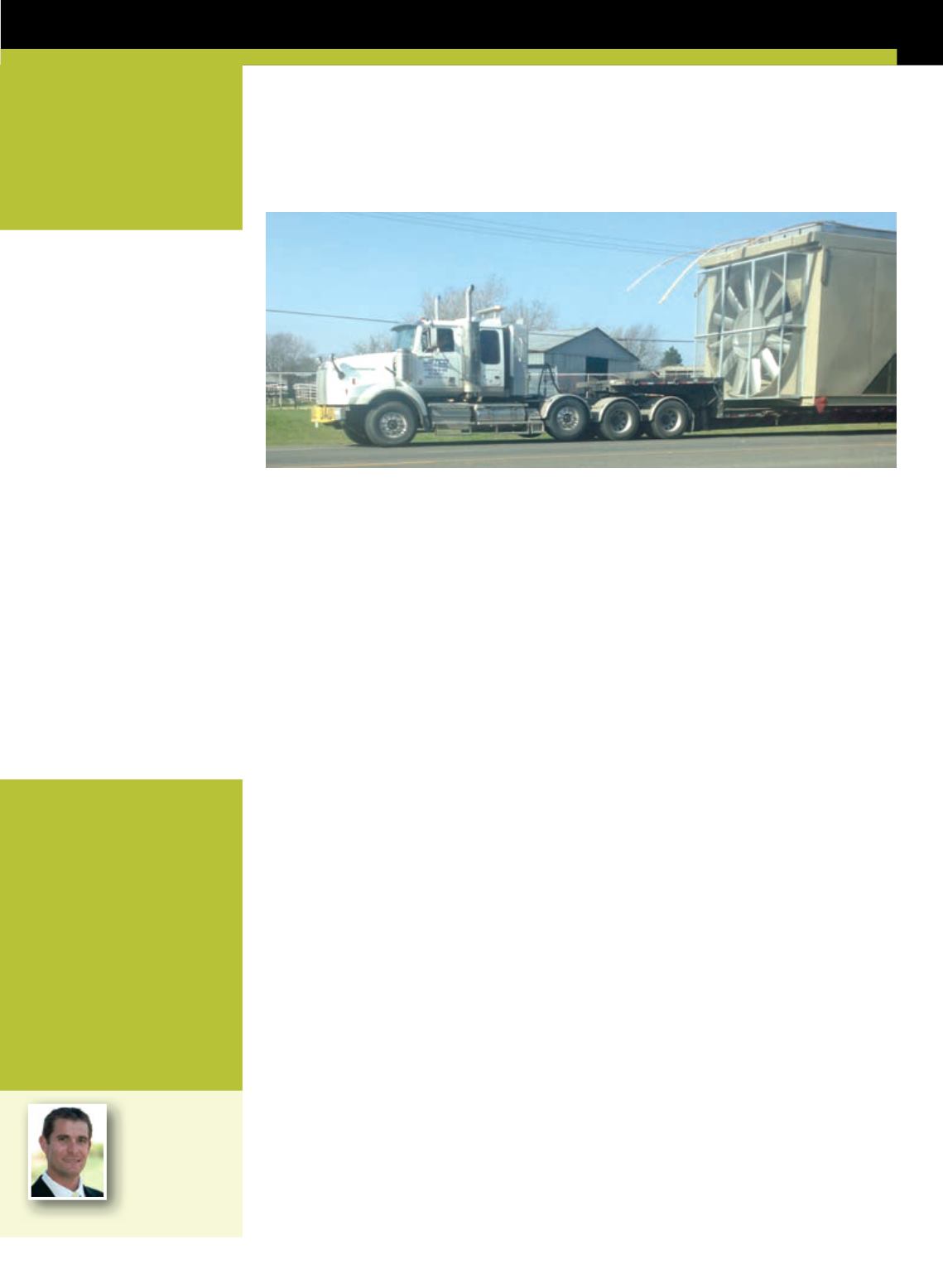
SAFETY
theDOTguidelines governing
how longCMVdrivers can
bebehind thewheel. The
purposeof these regulations
is tominimize the level of
fatigue in thedrivers on the
road. Wehave11hour rules,
14hour rules, requirements
to log everyhour of driving
time, andnow, (to step it up a
notch), proposed legislation to
requireElectronicOnBoard
Recorders in allCMV’s.
What about those inour
group that logmiles in
non-CMV’s for company
business? In anyof our typical
arrangementsmembers of
management, salespersonnel
and safetyprofessionals are
also expected to loghigh
amounts ofmiles at all hours
forwork. Many are expected
todo “whatever it takes” to
meetwith the client, respond
to an accident, or sell the job.
We should remember that
our overall goal shouldbe
the safetyof our employees,
notmerely complianceor
ticket avoidance. If the same
potential for fatigue exists in
non-regulated areas of the
companywe should consider
whatwe aredoing to avoid the
same issues.
Distracted driving
Many companieswerehappy
tobegin to enforce aban
on theuseof cell phones or
23
APRIL 2015
ACT
How dowemeasure
transport safety?
AUTHOR:
Daniel Erwin
is a crane, rigging
and transportation
safety consultant
and author.
Daniel Erwin
discusses the safe
operation of CMVs.
similardistractionswhile
driving aCMV…as soon as
the law required it. This is a
big itemwith theDOT that
opensup companies aswell
as individual drivers to large
fines. What about the rest of
us? What arewe as companies
doing to curb these same
distractions inour “other”
drivers?
Distractionsdonot only
include talkingon cell phones,
(which, ifwe’rehonest,
weknow is still extremely
prevalent inourdrivers) but
alsoGPSunits, radios, andof
course theoccasional viewing
of our fellowpassengers as
we ride together or the “just
glancing” at emails or texts
received tomake sure theboss
isnot trying to reachus.
Crash indicator
TheDOTmeasures each
driver and the companyby
default byhowmany accidents
are experienced inagiven time
period. TheDOT requires
frequent and regular scrutiny
of drivinghistory, PSP reviews,
MVR checks, and actions
taken in certain instances.
Howwell arewe regulating
these same areas inournon
CMVdrivers? Arewepulling
MVR’s on a regular basis for all
thosewhodrive forus? And,
just as important, dowehave
aquantifiablemeasure for
evaluating and judgingwhat is
acceptable in these records and
taking action accordingly. The
alternative is that “we judge
each caseon an individual
basis, because every case and
employee isdifferent.” This
canbe especiallyprevalent in
the trendof turning theother
waywhen themembers of
seniormanagementwhodrink
at companydinners and events
get in their vehicles todrive
whilewewouldnever allow
that inourCMVdrivers.
If thequick examples above
don’t causeus to think about
themajorityof our focus, let’s
take a look at the statistics
below in closing:
Large trucks, (thoseover
10,0001pounds), account
for about 3percent ofmotor
vehicles involved inpolice-
reported crashes of all
severities, about 8percent of
vehicles in total fatal crashes,
and are associatedwith about
12percent of the annual total
traffic fatality count.
I guess thequestion I am
forced to askwhen I see
these statistics is, arewe as
an industrydedicating the
majorityof our efforts on
preventing citationswith
regulatory agencies or the true
safetyof our employees? Let’s
do everythingwe can tokeep
our focus on all areas that
makeus safer.
■
‘‘
”
We should
remember that
our overall goal should
be the safety of our
employees, notmerely
compliance or ticket
avoidance.
W
henwe think
of the topicof
transportation
safety inour industries, I am
confident that ourminds
go to the safeoperation
of our commercialmotor
vehicles (CMV). Consider
howmuch time, effort
andmoneywe spendon
compliance and safety
measures forDepartment
ofTransportation-related
procedureswithwhatwe
spendon the safeoperation
of our other vehicles; our
hundreds of pickup trucks,
company cars, and the like. I
think it is safe it say that the
amount of focus isnot even
close. In this article I’d like to
take a fewof thesemeasures in
comparison and askourselves
why the chasmbetween the
two areas is so large.
Hours of Service
We are all very familiarwith


